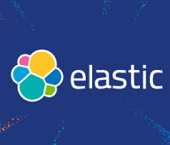| Elastic 8 Enhances ElasticSearch |
| Written by Kay Ewbank | |||
| Friday, 18 February 2022 | |||
|
The Elastic stack of data analytics software has been updated. Elastic 8 has enhancements to Elasticsearch’s vector search capabilities, native support for natural language processing models, easier ways to get data into the stack, and a streamlined security experience, The Elastic stack consists of Elasticsearch, a free and open search and analytics solution that includes an HTTP web interface and schema-free JSON documents; Kibana data visualization dashboard software for Elasticsearch; the Beats family of lightweight, single-purpose data shippers, and the Logstash ingest pipeline. Elasticsearch is built on Apache Lucene, and Amazon OpenSearch is an open source fork of Elasticsearch.
Elastic 8.0 brings a full suite of native vector search capabilities that empower customers and employees to search and receive highly relevant results using their own words and language. The headline change to this release is improved vector search. Elasticsearch 7.0 introduced field types for high-dimensional vectors, and subsequent releases have added support for vector similarity functions. This version adds native support for natural language processing (NLP) models directly into Elasticsearch. In addition, Elasticsearch 8.0 includes native support for approximate nearest neighbor (ANN) search. This means you can compare vector-based queries with a set of vector-based documents "with speed and at scale", according to the developers. Support for NLP has also been more generally improved. Rather than needing to carry out processing externally to Elasticsearch, users can now perform named entity recognition, sentiment analysis, and text classification directly in Elasticsearch without the need for additional components or coding. Users can use PyTorch machine learning models (such as BERT) directly in Elasticsearch, and perform inference using those models natively within Elasticsearch. These models can be your own custom models, or models published to the community. The other main improvement is to the security of the stack. Security is now enabled by default for self-managed clusters, meaning the data, network, and users are secured in the Elastic Stack. Elsewhere, the developers have added features including auto-generated tokens and certificates to streamline security management. Elastic 8 is available now.
More InformationRelated ArticlesWhat's the Best Way to Effectively Monitor a Kubernetes Cluster? Grafana 7 Adds New Visualizations New Amazon Elasticsearch Service
To be informed about new articles on I Programmer, sign up for our weekly newsletter, subscribe to the RSS feed and follow us on Twitter, Facebook or Linkedin.
Comments
or email your comment to: comments@i-programmer.info |
|||
| Last Updated ( Friday, 18 February 2022 ) |



